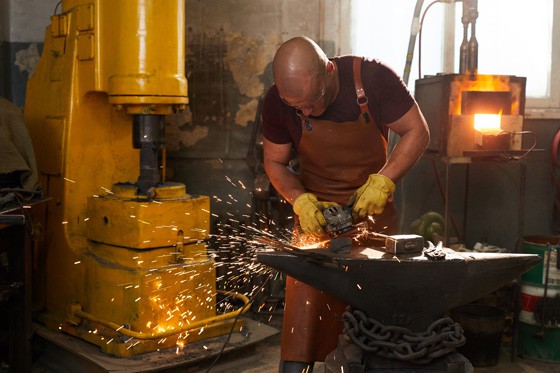First things first, let’s talk about why a grinder can be dangerous. A grinder is a powerful tool that spins a disc or wheel at high speeds to grind, cut, or polish various materials. If not used correctly, it can cause serious injuries.
One of the most common dangers of using a grinder is the risk of kickback. Kickback occurs when the wheel catches or binds on a piece of material, causing the grinder to jerk back towards the user. This can result in serious injuries, such as lacerations, broken bones, or even amputations.
Another danger is the risk of disc shattering. Grinding discs are designed to withstand the high speeds and forces involved in grinding, but they can still break under certain circumstances. If a disc shatters while in use, it can send sharp pieces flying in all directions, posing a serious risk to the user and anyone nearby.
So, what can you do to stay safe while using a grinder? Here are some safety recommendations to keep in mind:
- Wear Personal Protective Equipment (PPE)
Always wear the appropriate PPE when using a grinder. This includes safety glasses or a face shield to protect your eyes and face from flying debris, as well as gloves to protect your hands. Additionally, earplugs or earmuffs can protect your hearing from the loud noise of the grinder.
- Inspect the Grinder and Disc Before Use
Before using a grinder, inspect it and the grinding disc for any damage or defects. Look for cracks, chips, or signs of wear on the disc, and check that the guard is in place and functioning properly.
- Choose the Right Disc for the Job
Make sure you’re using the right disc for the job. Different discs are designed for different materials and tasks, so be sure to choose the appropriate one for the job at hand.
- Secure the Material
Secure the material you’re grinding or cutting before you start. This can prevent it from moving or shifting during use, which can cause kickback or other accidents.
- Hold the Grinder Properly
Hold the grinder with both hands and keep a firm grip on it at all times. Make sure your hands are positioned away from the grinding disc, and don’t reach over the spinning wheel.
- Use the Grinder at the Right Speed
Grinders are designed to operate at specific speeds, so make sure you’re using the right speed for the disc and the material you’re working on. Using the wrong speed can cause the disc to wear out quickly or even break.
- Don’t Force the Grinder
Let the grinder do the work. Don’t push down too hard or try to force the disc through the material. This can cause the disc to bind, which can lead to kickback or other accidents.
- Keep a Safe Distance
Keep a safe distance from the grinder and anyone else in the area. This can help prevent injuries in case of disc shattering or kickback.
In conclusion, using a grinder can be dangerous, but by following these safety recommendations, you can help reduce the risk of accidents and injuries. Stay safe out there, and always prioritised safety when using power tools.
Cheers,

![]()






